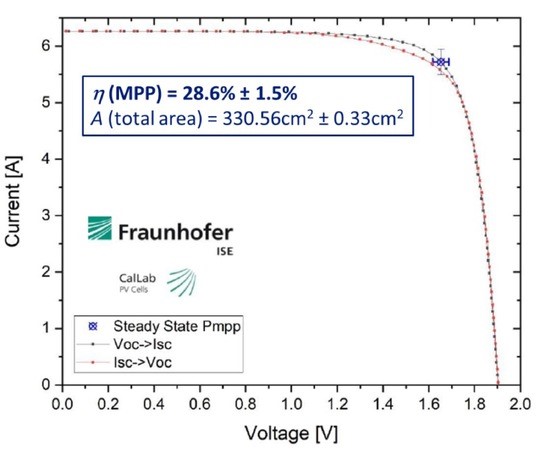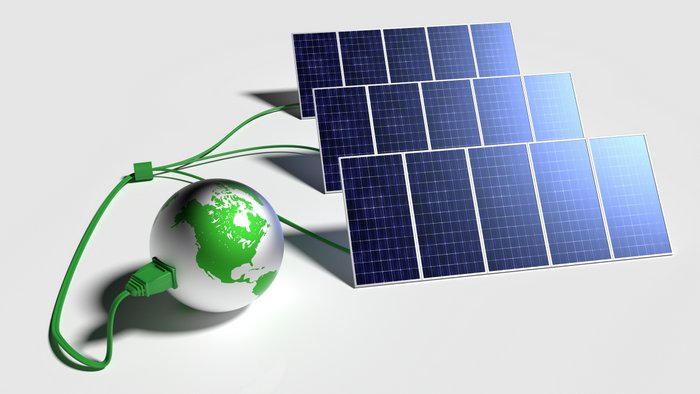Qcells closer to tandem solar commercialization with large-area cell world record

Tandem solar cells that incorporate perovskite technology will usher in the next era of solar module power and efficiency, once they successfully move from the lab to commercialization. PV manufacturer Qcells is definitely getting closer, announcing another world record for tandem solar cell efficiency, reaching 28.6% on a full-area M10-sized cell.
This is quite the achievement for Qcells, which has been working since 2016 to develop a commercially viable tandem solar cell, but has only been working on large-area tandem solar cell development since 2023. Qcells says the cell can be scaled for mass manufacturing.
“The tandem cell technology developed at Qcells will accelerate the commercialization process of this technology and, ultimately, deliver a great leap forward in photovoltaic performance,” said Danielle Merfeld, Global CTO at Qcells. “We are committed to advancing the next generation of solar energy efficiency and will keep investing significantly in research and development to drive progress in this field as every kilowatt counts on the path to building a more sustainable future.”
Tandem solar cell efficiency record
Qcells’ 28.6% certified record efficiency was independently verified by the CalLab at the Fraunhofer Institute for Solar Energy Systems (ISE).

Qcells’ new record for tandem solar efficiency is based on perovskite technology of the top cell and proprietary Q.ANTUM technology of the bottom cell. The value is a total-area measurement on a full-area M10-sized (roughly .36 square feet or 330.56 cm2) cell produced on Qcells’ R&D pilot line in Germany using a standard industrial silicon wafer that can be interconnected into an industrial module.
This approach to tandem development focuses on commercial processes and tools that readily scales to mass manufacturing rather than attempting to show a proof of concept in a lab scale environment.
Qcells tandem cell stacking
Qcells’ stacking of a perovskite top and silicon bottom solar cell to form a tandem cell improves performance by capturing high-energy light more efficiently by the top cell while low-energy light is being transmitted and captured by the bottom cell. This improves the power per area and therefore less modules are needed to achieve the same solar system power output. This breakthrough has the potential to further reduce the cost of solar energy, and the land footprint needed for solar projects making solar even more affordable, accessible and sustainable.
“The champion cell is a typical cell from our R&D pilot line in Germany and has been fabricated by exclusively using processes that are feasible for mass production. This result is laying the groundwork for future commercialization of this exciting technology,” said Robert Bauer, Head of Qcells R&D in Germany.
In 2019, Qcells significantly boosted its efforts to realize the next-generation solar product at the company’s well-established R&D foothold in Bitterfeld-Wolfen, Germany, and by launching a dedicated research center in Pangyo, Korea.
Following a series of R&D feats in developing highly efficient small-area tandem solar cells, Qcells has pivoted its focus to large-area tandem development, which lead to this new world record efficiency of a tandem solar cell.
“We are fortunate to have outstanding global R&D teams and to have received invaluable support from our partners in Europe and Korea, leveraging their resources and expertise. We deeply appreciate everyone dedicated to driving innovations that bring us closer to achieving our climate goals,” said Danielle Merfeld, Global CTO at Qcells.





Comments are closed here.